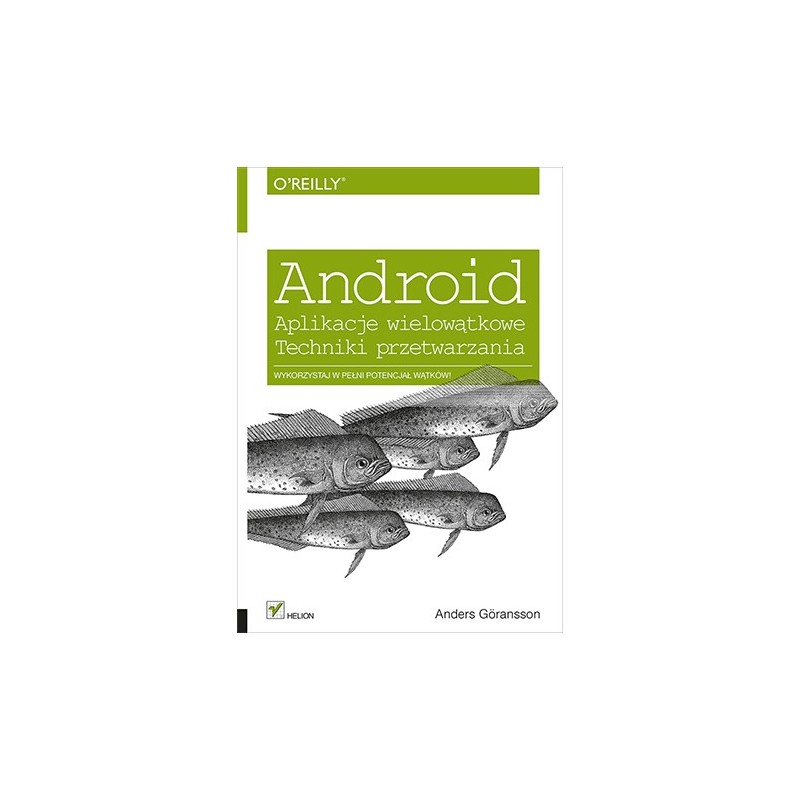- Out-of-Stock



Anders Göransson
Original title: Efficient Android Threading: Asynchronous processing techniques for Android applications
Translation: Lech Lachowski
ISBN: 978-83-246-9614-7
Date of issue: 2015-02-24
Format: 168x237
Pages: 248
Make the most of the threads!
If you want to create applications that provide users with great experience, if you want to do complex tasks faster or you just have to do different things at the same time - learn how to use threads. Creating multithreaded programs is difficult, but mastering this art will allow you to achieve tangible benefits!
This book is entirely devoted to the use of threads on the Android platform. Thanks to it you will get to know various methods of asynchronous processing and their advantages and disadvantages. However, at the very beginning you will get acquainted with the basic information on Java multithreading. You will learn how threads communicate with each other and synchronize access to resources and how to manage them. The following chapters contain a large dose of knowledge about various asynchronous techniques. Familiarization with their content will help you choose a technique that will meet your requirements when you start developing a multi-threaded application. This book is a must-read for programmers who want to take full advantage of the Android platform.
Guide to the world of threads on the Android platform!
Table of Contents
Foreword (11) 1. Components of the Android system and the need for multiprocessor processing (15)
PART I. BASIS (27) 2. Multithreading in Java (29)
3. Threads in the Android system (41)
4. Thread communication (49)
5. Communication between processes (81)
6. Memory management (93)
PART II. ASYNCHRONIC TECHNIQUES (107) 7. Basic thread life cycle management (109)
8. HandlerThread class: high-level queuing mechanism (121)
9. Checking the execution of a thread using the artist's framework (131)
10. Binding a background task to a user interface thread using the AsyncTask class (151)
11. Services (169)
12. IntentService class (189)
13. Accessing the ContentProvider class using the AsyncQueryHandler class (197)
14. Automatic background execution using chargers (207)
15. Summary: selection of asynchronous technique (229)
A. Bibliography (235) Index of reference (237)
No product available!
No product available!
Female terminal block, 8-pin. 3.5 mm pitch. Height 15.6 mm. GOLTEN 15EGTK-3.5-08P-14-00AH
No product available!
PCIe TO PCIe x1 Board (C) with EU power adapter is a practical adapter that enables connecting standard PCIe cards to the Raspberry Pi 5. The dedicated 12 V power supply ensures stable operation of high-demand PCIe devices, and the universal slot supporting x1 to x16 formats offers great flexibility in selecting expansions. It is an ideal solution for building compact systems with network, storage, or industrial interface extensions.
No product available!
No product available!
No product available!
No product available!
1.5-meter power extension cable with an IEC C13 plug and an IEC C5 connector, ideal for powering a home theater or as an extension for a laptop charger. Its high quality and length make it reliable even in hard-to-reach places. Akyga AK-NB-03A
No product available!
No product available!
HK TGY-306G Ultra Fast/High Torque MG Digital Alloy Cased Servo 3kg / .06sec / 21g (22687)
No product available!
Kit for building a worm robot. The chassis is equipped with four motors and a controller, 2 RGB diodes and an STM32F030 microcontroller. M5Stack K033
No product available!
ROSA3D filament made of high-quality ASA polymer. 0.7 kg of filament with a diameter of 1.75 mm is wound on the spool. ROSA3D ASA Yellow
No product available!
No product available!
No product available!
No product available!
Raspberry Pi computer built into the keyboard. It is equipped with a 1.8 GHz quad-core ARM Cortex-A72 processor and 4 GB DRAM. British keyboard layout. Raspberry Pi 400 UK
No product available!

Anders Göransson
